The windswept terrain of the Altiplano of Northern Chile and South West Bolivia is home to some of the world’s highest altitude lakes. Surrounded by volcanic mountains, many snow-capped, but set in a landscape largely devoid of vegetation, most of these soda lakes are of breathtaking beauty. They are also home to nearly 100 bird species, the most numerous and distinctive of which are three species of Flamingos: the more numerous Andean and Chilean and the rarer James Flamingo.
Of the lakes, Laguna Colorada is unquestionably the most spectacular. Sitting at an altitude of 4,300m, it lies at the foot of the Colorado and Negro Mountains. The lake receives its name from the fiery reddish coloured waters which are caused by the presence of microscopic algae (Dunaliella salina) that contain a red coloured pigment that is emitted with greatest intensity between noon and 4pm when the level of solar radiation and temperature are highest.
The shores of the lake are encrusted with borax, used for making soap, which provides an arctic-white counterpoint to the flaming red waters. As in the soda lakes of the Rift Valley of East Africa, it is the algae which inhabit these seemingly inhospitable waters that attract the Flamingos and which in turn gives them their pink colouring.
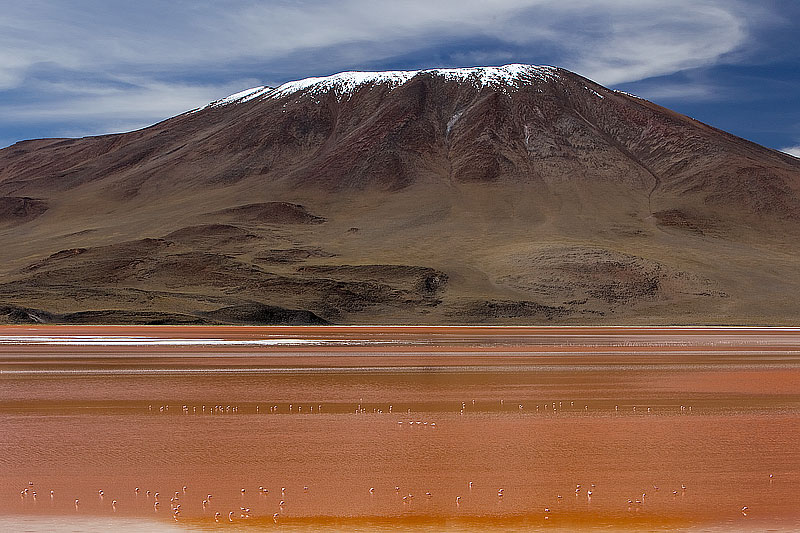
Flamingos feeding in the red and orange waters of Laguna Colorada, Reserva de Fauna Eduardo Avaroa, S.W. Bolivia
At most of the lakes the Flamingos are quite skittish. This is one of the reasons why it often pays to travel alone or with just one or two other individuals. It’s much easier to get close to wildlife on foot as a solitary individual than in a large group. Moreover, the few tourist groups that visit the Altiplano’s lakes are generally led by guides that are either completely ignorant of bird etiquette or do not even bother to accompany their guests to the lakes. All of this meant that it was hard to get close to the Flamingos even with the use of long lenses.
The best opportunity lay at Laguna de Chaxa in North East Chile. Here the Flamingos are a little more habituated to humans. But only to an extent. A slow, measured approach works well and while our group was well disciplined, the same could not be said of the 1-2 other tourist groups that turned up a little after we arrived. On our two visits to Chaxa, we had a good 45-60 minutes of Andean, Chilean and juvenile James Flamingos in nice pre and post sunrise light on our first visit but no more than 15 minutes on the second trip thanks to an ill-disciplined bus load of German tourists. We tried to explain to them that if they wanted to see the Flamingos – which presumably they were there to do – they needed to approach very slowly. Of course they were having none of this and charged in with their point and shoot cameras. Surprise, surprise, the lake’s entire population of Flamingos quickly took flight, not to return till well after we had given up.
However, before the tourists arrived on the first visit, there was a brief five minute opportunity, just prior to the sun peaking over the mountains to east, when the lake was bathed in the most beautiful yellow pastel colouring. This image shows an Andean Flamingo walking in this light with part of a sunrise lit mountain flank reflected in the top right.
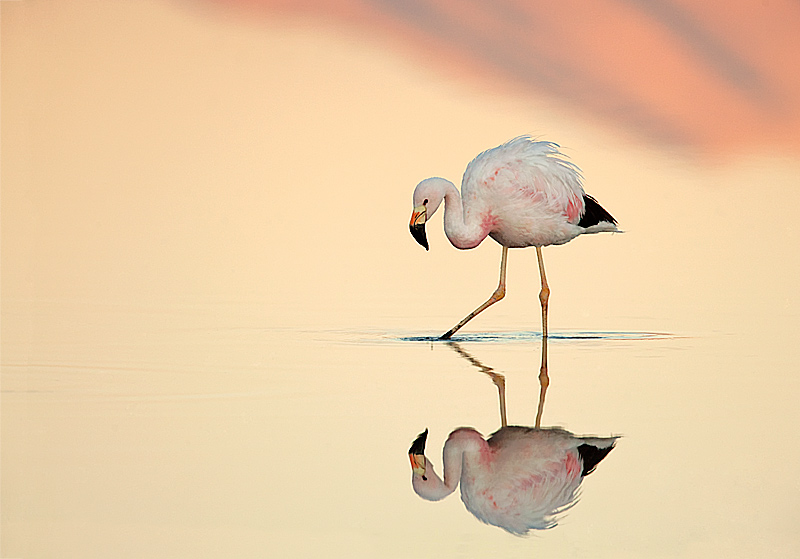
Andean Flamingo walking through pastel coloured water with sunrise lit mountian reflection at top right, Chaxa Lake, Los Flamencos National Reserve, Chile
Shortly after the sun rose, there were opportunities with juvenile James Flamingos..
…as well as this winter visitor from North America, a Baird’s Sandpiper.
The shores of Chaxa Lake are covered with blocks of crusted salt of different colours. I was keen to include the Flamingos against this back drop. The following image shows a Chilean Flamingo walking parallel to the salt covered shore.
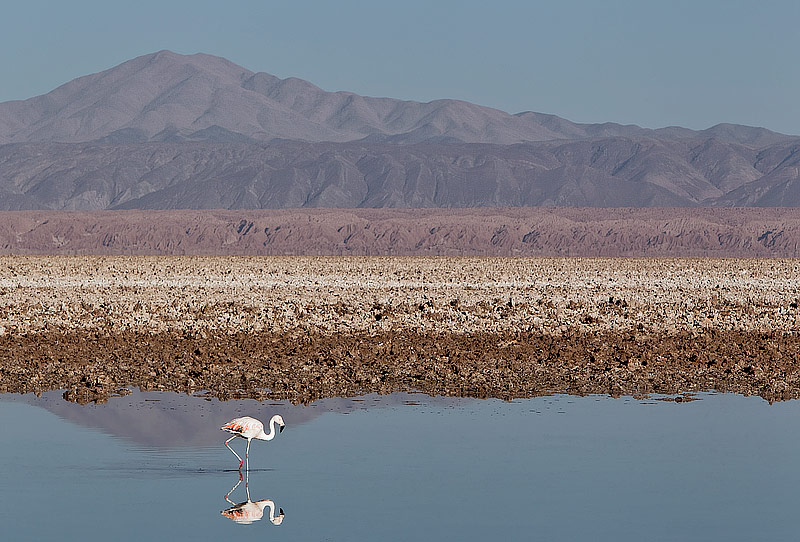
Chilean Flamingo walking in the shallows of Lake Chaxa adjacent to the salt crusted shore, Los Flamencos National Reserve, Chile
When the tourists arrived on the second visit to spook the Flamingos, I was able to anticipate the action as these Andean Flamingos ran to take flight.
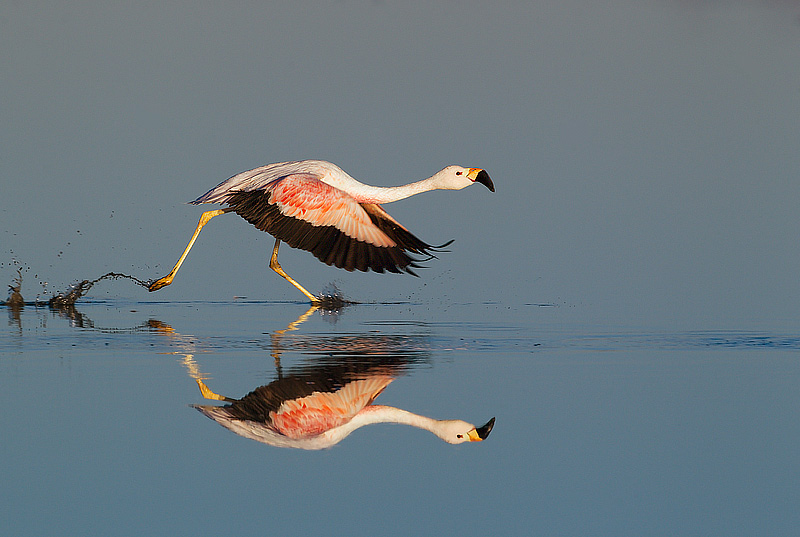
Andean Flamingo running along lake surface to take flight, Chaxa Lake, Los Flamencos National Reserve, Chile
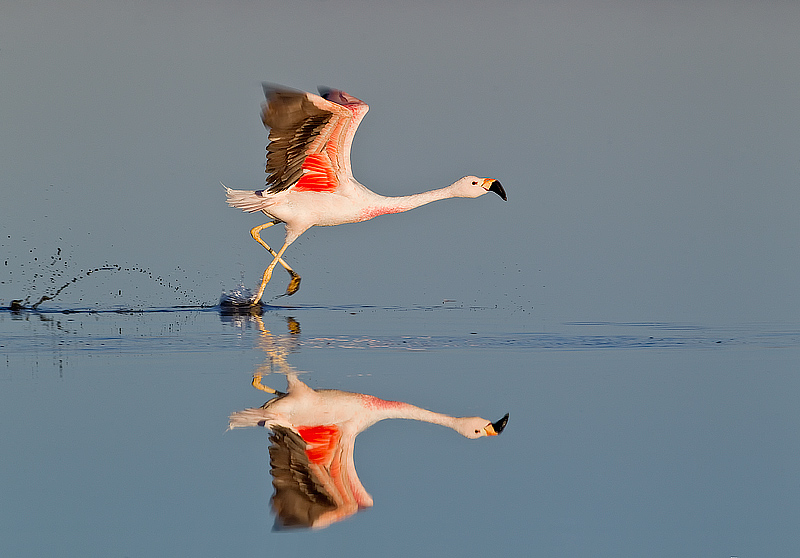
Andean Flamingo running along lake surface to take flight, Chaxa Lake, Los Flamencos National Reserve, Chile
Coming soon: something totally different.
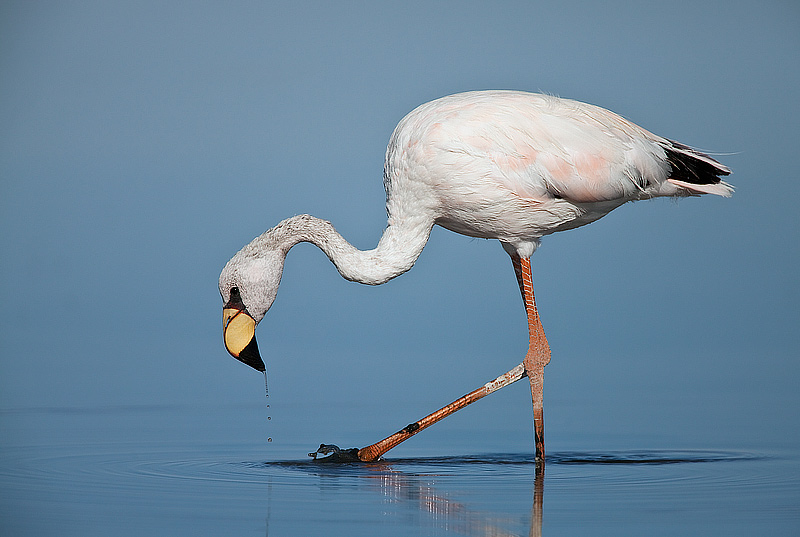
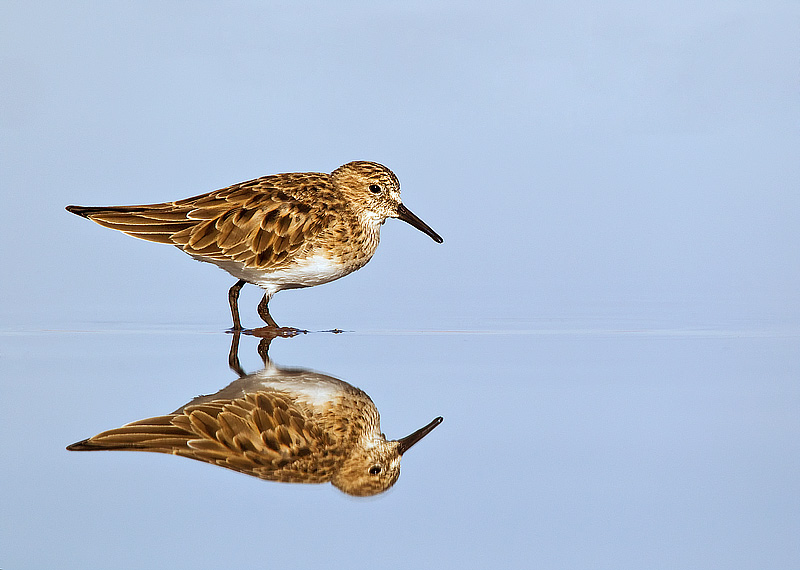
Arthur Morris
April 8, 2011
Great stuff. Flamingo in pastel water is killer. Baird’s on the wintering ground is way cool for this shorebird lover. Check your e-mail for the latest on Midway and the possible US government shut-down tonight…. Hope to see you on Monday…
Goos van der Heide
April 9, 2011
I love it!
Nice colours ,compo’s and reflections
Doug Canham
April 9, 2011
Paul – beautiful work. Perfect reflections! Doug Canham
Ron Horn
April 10, 2011
Hi Paul,
All spectacular and the Flamingo at sunrise with pastel water is one of the most amazing images I have ever seen. My adult daughter said WOW about a dozen times when I showed it to her. Have a great time in Midway, Jacque and I would like to be there with you.
Paul Mckenzie
April 10, 2011
Thx Ron. Hope all is well with the family. Am en route to Midway as I write this. Very excited as always and will be interesting to see the damage caused by the tsunami (which covered 75% of Eastern Island).
Verschueren Yan
April 23, 2011
Hoi Paul,
Like usual great fantastic pictures!!! Coulorfull, sharp, action in a beautifull unique landscape . I thank you and all our Staff, for helping WWF Belgium spreading our message to protect nature on world by using your amazing pictures. Your beautiful picturses inspire people to protect the biodiversity. Thanks. I always waiting for a next wildlife adventure